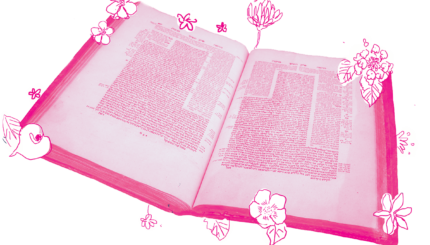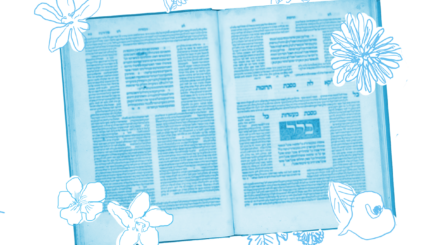Memories of the film, Yentl, came to mind when a number of highly Jewishly educated women invited me to join the Shalhevet Women’s Kollel of St. Louis. Yentl was based on Isaac Bashevis Singer‘s story of a girl who is so determined to study Talmud that she disguises herself as a boy in order to enter the yeshiva. By contrast to the main character in Yentl, I did not start to study anything about Judaism until my late twenties, and feel that I have been trying to catch up for the past forty years.
The idea of studying Talmud was planted last Shavuot when Maharat Rori Picker Neiss invited several of her classmates from Yeshivat Maharat to St. Louis for a study-filled holiday at Bais Abraham Congregation. They sat in a circle to demonstrate what a group of women studying a Talmud text looks and sounds like. It was quite inspiring. Their example instilled the desire in women from all over our community to form our own study group. Then, we started the Shalhevet Women’s Kollel of St. Louis just before Rosh Hashanah.
The volume we are currently tackling is Tractate Beitza which opens with the question of the status of an egg laid on a holiday. In the beginning, the material was so completely foreign that some of us felt very intimidated. Maharat Rori, the Rosh Kollel, assured us that our feelings were completely understandable. She shared some essential vocabulary and history to give us some clues that helped us to engage with the text. We were assured that our persistence would be rewarded and the Talmud’s arguments would become more coherent as we moved along.
My study partner and I decided we would simply approach this study the way we had approached the world as daring, curious little girls devouring our environment while constructing meaning for ourselves. We indulged in all kinds of tangents. For example, when and how does an egg actually develop? During our explorations of the Notes, Halakha (Jewish law), and Background explanations around the edges of the pages of text in our volumes of the Koren Talmud Bavli (The Noe Edition) we have collected little pearls of information that have yet to be strung together in a beautiful necklace of understanding.
Following our partner study, we join the whole group for a session review and summation. These summations have enabled us– in small steps for some and larger steps for others– to understand how the threads of Talmudic arguments develop.
When I feel discouraged, or snowy nights provide convenient excuses for not attending Shalhevet Kollel, I think about all the women over the ages who yearned for the privilege of Talmud study. In solidarity with those women who came before me, I make my way to Kollel. I go, and those are often the nights I understand the most. I imagine that those women of the past are proud of me and hope young girls and their future granddaughters will have the luxury of considering today’s rare privilege of women’s Talmud study a right.
The Jewish world is full of debates. Get the latest in MyJewishLearning’s weekly blogs newsletter.
Shavuot
Pronounced: shah-voo-OTE (oo as in boot), also shah-VOO-us, Origin: Hebrew, the holiday celebrating the giving of the Torah at Mount Sinai, falls in the Hebrew month Sivan, which usually coincides with May or June.
Talmud
Pronounced: TALL-mud, Origin: Hebrew, the set of teachings and commentaries on the Torah that form the basis for Jewish law. Comprised of the Mishnah and the Gemara, it contains the opinions of thousands of rabbis from different periods in Jewish history.


